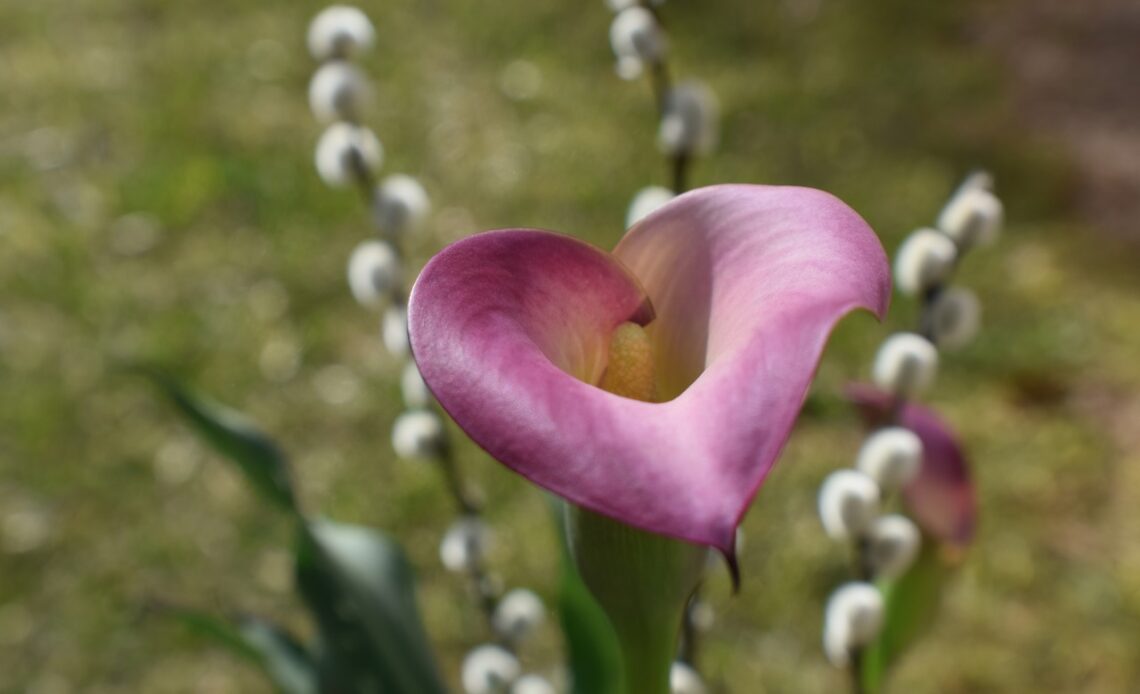
Calla lilies may be a wonderful sight to behold, but pet owners need to be aware of their toxic properties to dogs. These plants contain insoluble calcium oxalate crystals that can irritate the skin, mouth, throat, and gastrointestinal tract of dogs. Symptoms of calla lily poisoning in dogs can include drooling, vomiting, difficulty swallowing, and swelling of the mouth, face, or tongue.
In this article, we will delve into the identification of calla lilies, explore the chemistry behind their toxicity to dogs, provide preventative measures, and offer safe alternatives for dog owners. It is crucial for pet owners to recognize the potential harm that can come from these beautiful flowers and take the necessary precautions to keep their furry friends safe.
Identifying Calla Lilies
Calla lilies are beautiful flowers that come in a variety of colors and are popular for both indoor and outdoor decoration. These flowers have a distinctive shape with a long smooth stem and a funnel-shaped bloom. Calla lilies are also known for their glossy and waxy leaves that grow in a rosette pattern. They can grow up to 2-3 feet tall and prefer partial sun to full shade.
Calla lilies are commonly found in gardens, parks, and even in floral arrangements. However, it is important to be able to identify them as they can be dangerous to dogs. Dogs are susceptible to calla lily poisoning through ingestion or contact with the plant. Knowing how to identify these flowers and where they can be found can help prevent potential poisoning in dogs.
Why Are Calla Lilies Poisonous?
Calla lilies may be aesthetically pleasing, but they contain hazardous compounds that can be dangerous to dogs. The entire plant, including the flower, stem, and leaves, contains a high concentration of oxalic acid, which can lead to symptoms of toxicity if ingested. Oxalic acid crystals can cause intense burning and irritation in the oral cavity, leading to excessive drooling, pawing at the mouth, and difficulty eating or swallowing.
Symptoms of calla lily poisoning in dogs may also include vomiting, diarrhea, lethargy, and a reduced appetite. In severe cases, dogs may experience difficulty breathing or a rapid heart rate. It’s essential to seek veterinary care immediately if you suspect that your dog has ingested calla lilies.
To prevent calla lily toxicity in dogs, it’s essential to keep them away from these plants. If you have calla lilies in your home or garden, make sure to keep them in a location that’s out of reach from your pets. When walking your dog, be sure to avoid areas where calla lilies are growing.
If your dog does come into contact with calla lilies, it’s crucial to seek veterinary care promptly. The veterinarian may induce vomiting to remove any remaining plant material in your dog’s stomach. Supportive care, such as IV fluids and anti-nausea medication, may also be necessary.
In conclusion, calla lilies can be toxic to dogs due to their high concentration of oxalic acid. It’s crucial to be aware of the symptoms of calla lily poisoning in dogs and take preventive measures to keep your pets safe. It’s always best to consult with a veterinarian if you suspect that your dog has ingested something toxic.
Prevention and Treatment of Calla Lily Poisoning
Prevention is always better than cure when it comes to calla lily poisoning in dogs. One of the first things pet parents can do is to remove these plants from their garden and home. If this is not an option, then taking necessary precautions such as placing them in areas that are out of reach for pets can reduce the risk of contact. It is also important to talk to kids or other family members who may bring these flowers home as gifts and educate them about the risks associated with calla lilies for dogs.
If a dog does come into contact with calla lilies, it is crucial to act quickly and seek veterinary care. The first step is to remove any visible pieces of the plant from the dog’s mouth. Then, the vet may induce vomiting or use activated charcoal to absorb the toxins. In severe cases, hospitalization may be required for observation and treatment.
It is important to note that prevention and early treatment are the best ways to ensure a positive outcome. Delaying treatment or ignoring symptoms can lead to serious health complications for our furry friends.
Safe Alternatives to Calla Lilies
If you’re looking for safe and dog-friendly alternatives to calla lilies, there are many beautiful options to choose from. Here are six of the best non-toxic plants that will brighten up your garden while keeping your furry friend safe:
- Roses: A classic choice for any garden, roses come in a variety of colors and sizes. They are safe for dogs and add a romantic touch to any space.
- Sunflowers: With their bright yellow petals and tall stems, sunflowers are a cheerful addition to any garden. They’re also safe for dogs and attract birds and bees.
- Lavender: Known for its relaxing scent, lavender is a versatile plant that comes in different shades of purple and blue. It’s safe for dogs and can be used for cooking, aromatherapy, and crafting.
- Marigolds: These bright and cheerful flowers come in shades of orange, yellow, and red. They’re safe for dogs and are often used in natural pest repellents.
- Petunias: Petunias are low-maintenance and come in a range of colors. They’re safe for dogs and can be planted in hanging baskets, window boxes, or in the ground.
- Violas: These dainty flowers come in a variety of colors and are safe for dogs. They’re also edible and can be used to decorate cakes and desserts.
These are just a few examples of non-toxic plants that will make great alternatives to calla lilies. By selecting dog-friendly plants, you can create a beautiful and safe environment for your furry friends to enjoy.

